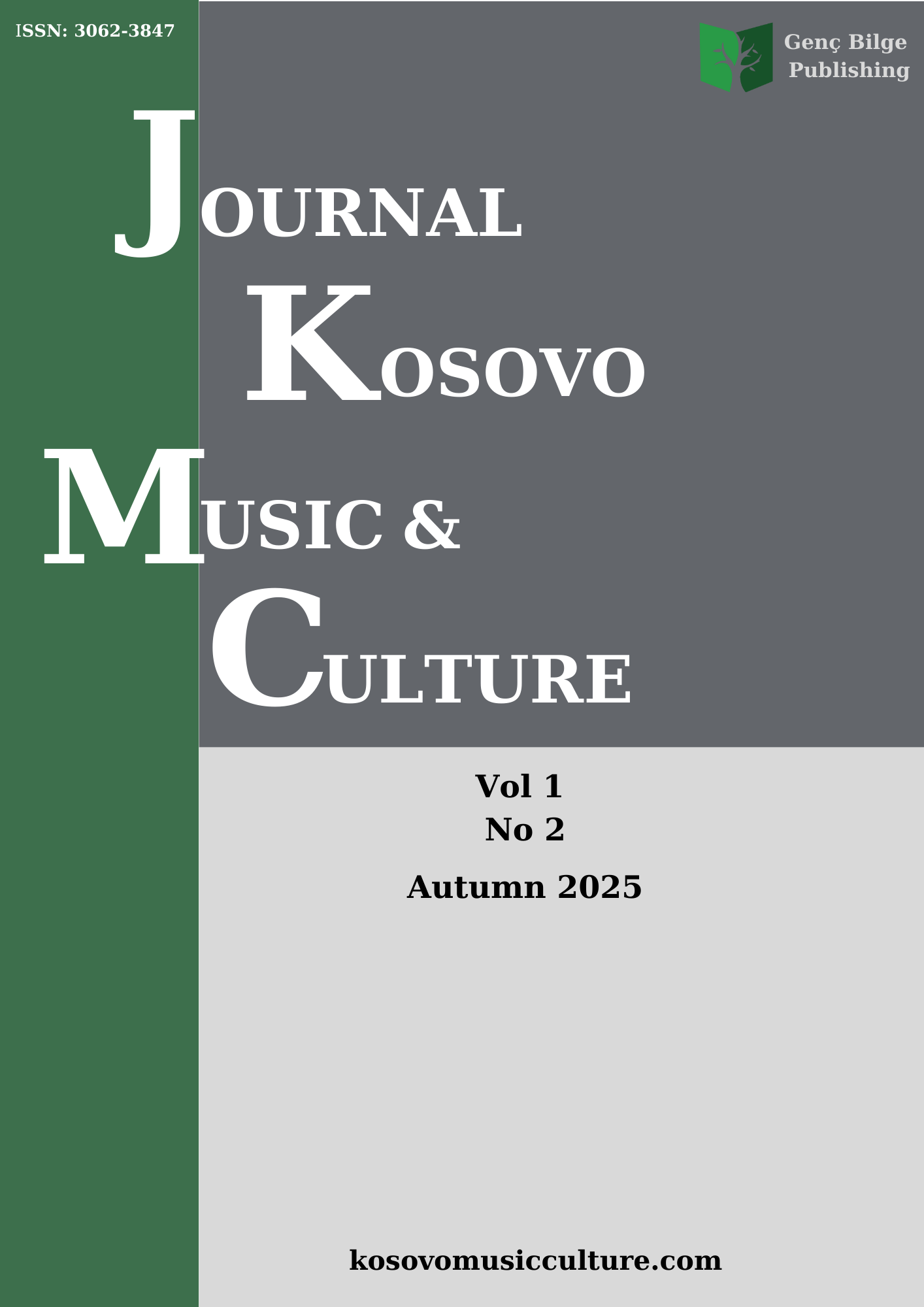The role of meter in the piano works of Zeqirja Ballata and its contribution to Kosovo’s musical modernism
DOI:
https://doi.org/10.5281/zenodo.17366894Keywords:
Kosovo cultural heritage, Kosovo music, Meter, Metric dynamics, Pianistic expression, Modernism in Kosovo , Zeqirja BallataAbstract
This study provides a cross-sectional analysis of the analytical results concerning meter as a component of rhythm in the broad sense within the piano works of the Kosovar composer Zeqirja Ballata (1943), who is regarded as a promoter of contemporary compositional techniques of the 20th century. He distinguishes himself from other Kosovar composers through his bold musical language, the use of contemporary expressive means, and his consistency in applying them. Pronounced dissonances, nuclear motifs, new notation, novel acoustic phenomena, consonances created by overlapping close intervals, extreme dynamics, exploration of pianistic acoustic possibilities, dramatic expressiveness, and other characteristics of his musical language classify Ballata among the most innovative creators of his time and as a guide of this creative style among Albanian composers. In the course of a comprehensive in-depth analysis of Ballata’s piano works, meter emerges as a tool he employs wisely to create a distinctive foundation for shaping the overall aesthetic message. The empirical corpus of this research comprises all of his piano works, the number of which amounts to 14. The purpose of this study is, through detailed metric analysis, to identify the metrical devices employed and the manner of their use in the overall texture of Ballata’s piano music. The research method applied in this study is qualitative. The presentation of research results in the paper has been carried out not only through verbal text but also with tables. The analysis is primarily based on the theory of musical analysis, specifically meter, according to the author Tome Mançev
Downloads
Published
Issue
Section
License
Copyright (c) 2025 Journal of Kosovo Music and Culture

This work is licensed under a Creative Commons Attribution-NonCommercial-NoDerivatives 4.0 International License.




